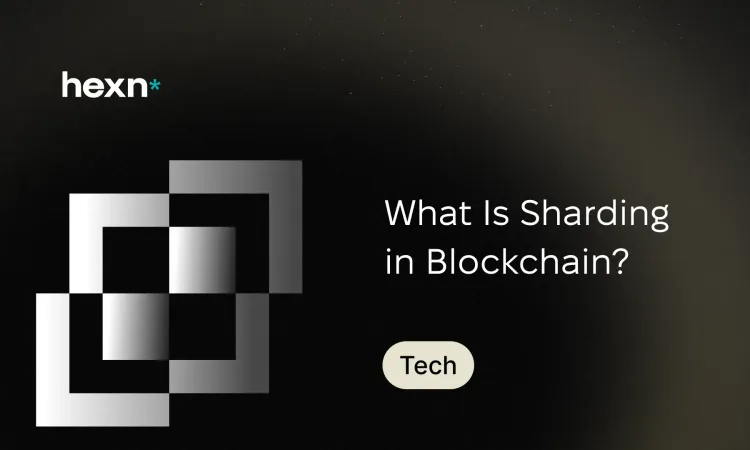What Is Sharding in Blockchain?
Sharding is a method for splitting a blockchain into smaller parts called shards so the network can handle more transactions without forcing every node to store and process everything. It matters because it offers a practical route to scale decentralized systems while keeping them accessible and efficient.
Sharding in a Nutshell
- What it does: partitions the blockchain so different groups of nodes handle different subsets of transactions.
- Main benefits: faster throughput, lower node storage and compute requirements, and improved overall capacity.
- Key trade-offs: added complexity for cross-shard communication, potential security vectors, and data availability challenges.
Why Scalability Is a Core Blockchain Problem
Decentralized ledgers face a fundamental tension: increasing speed and capacity often complicates security or decentralization. This tension is commonly framed as the trade-off among scalability, security, and decentralization. Sharding targets the scalability side by allowing many operations to proceed in parallel, which can help systems support more users and higher transaction volumes.
How Sharding Works
At its simplest, sharding redistributes the network workload. Instead of each node validating every transaction, the network is split into shards, and each shard validates only a slice of activity. That partitioning enables parallel processing, so throughput grows with the number of shards rather than being limited by a single global ledger.
Sequential vs Parallel Processing
Traditional blockchain nodes operate sequentially: every node must verify all transactions and keep the full state. That model strengthens security but limits speed. Sharding moves toward parallel processing, where independent shards validate different transactions at the same time, improving latency and capacity.
Horizontal and Vertical Partitioning
Sharding is a form of horizontal partitioning, where records are split across different databases so each shard holds a subset of complete entries. By contrast, vertical partitioning splits data by attributes or columns, which can complicate reconstruction of full records. For blockchain use cases, horizontal partitioning tends to be more practical because each shard can maintain full transaction histories for its assigned subset, preserving data integrity within that shard.
Why Horizontal Partitioning Fits Decentralized Ledgers Better
- Scalability: Each shard handles fewer transactions, so the system can process many transactions simultaneously.
- Decentralization: Lower per-node requirements make it easier for more participants to run validator nodes, supporting a broader distribution of control.
- Data integrity: When shards keep complete records for their subset, it is easier to verify local state without reconstructing blocks from scattered columns.
Benefits of Sharding for Blockchains
Sharding can improve several aspects of a distributed ledger:
- Higher transaction throughput: Parallel validation means more transactions per second as the number of shards increases.
- Lower storage and compute costs: Nodes store and process only a portion of the state, reducing hardware requirements and making participation more affordable.
- Better network performance: Adding capacity can be as simple as creating or expanding shards instead of forcing every node to scale up.
These improvements can help blockchains move from niche use to mainstream applications by improving user experience and lowering barriers to entry for validators.
Key Limitations and Security Concerns
Sharding introduces new technical and security challenges that designers must address:
- Single-shard takeover risk: Because each shard contains only a fraction of the network's validators, an attacker with limited resources might control one shard and manipulate its state.
- Cross-shard transaction complexity: Moving assets or data between shards requires coordination. Poorly designed cross-shard protocols can open opportunities for errors or double-spend scenarios.
- Data availability: If a shard becomes temporarily unreachable, the data needed to validate cross-shard operations may be missing, stalling dependent transactions.
- Node synchronization problems: Keeping shards consistent and propagating state changes across the network can introduce latency and complexity, especially when nodes have varying performance.
- Protocol design and balance: Effective sharding needs robust mechanisms to assign validators to shards and to reassign them periodically so no shard becomes weak or overloaded.
How Projects Approach Sharding
Implementations vary, but most practical designs combine sharding with safeguards such as random sampling of validators, frequent reshuffling of validator assignments, and cryptographic proofs that enable light clients to check cross-shard results. These measures aim to reduce the risk of shard-level attacks while keeping the benefits of parallel processing.
Sharding is attractive for networks that need to support high transaction volumes and many users without concentrating power in a few large validators. It works best when protocol designers can solve cross-shard messaging reliably and ensure validators are distributed evenly across shards.
Final Thoughts
Sharding is a powerful tool to address blockchain scalability. It helps increase throughput and reduce node costs, but it also adds operational complexity and new attack surfaces. Whether sharding is the right choice depends on a project s priorities and ability to implement strong cross-shard coordination and security guarantees. As research and testing continue, sharding will likely remain a central option for blockchains aiming to scale while retaining decentralization.
